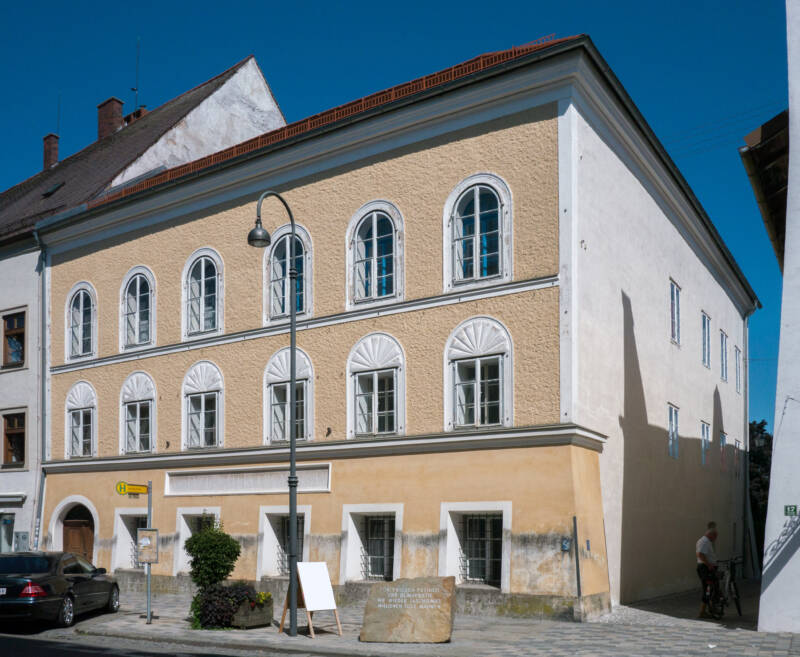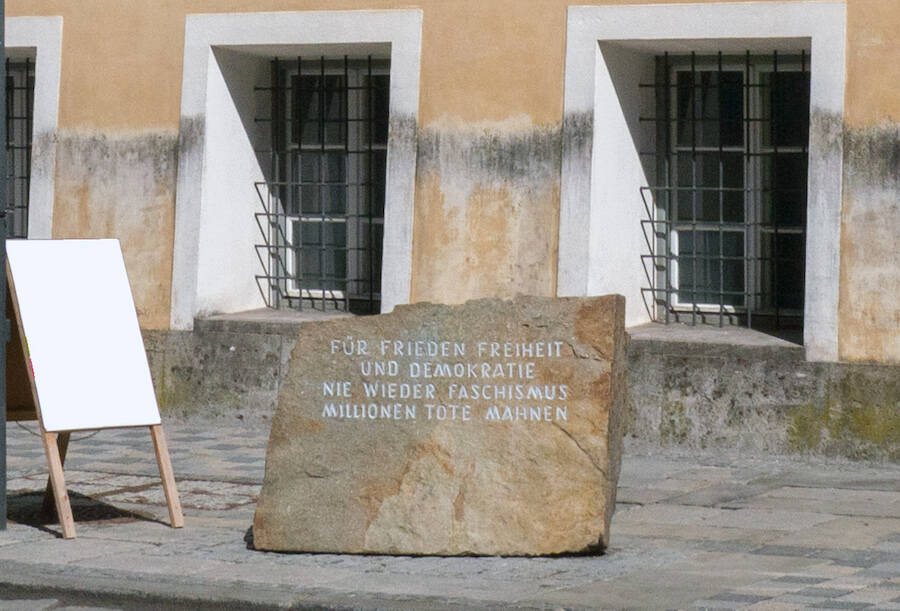What to do with the property has long been the subject of tense discussion. After decades of uncertainty, the Austrian government has finally made a decision.

Wikimedia CommonsThe property was formerly a day-care center for people with disabilities.
Adolf Hitler’s childhood home in Braunau am Inn has been the subject of discussion for years. The Austrian government rented the building from its former owner for decades to stop far-right tourism. According to the BBC, officials have now decided to turn it into a police station.
Hitler only spent the first few weeks of his life in one of these apartments, but the rise of far-right groups has some worried that the property could serve as a beacon for their political ideology. As such, what to do with the building has been a rather complicated issue.
According to The New York Times, the property served as a day-care center for disabled people for more than 30 years after World War II. The business closed in 2011 when its owner refused to make it more wheelchair-accessible and rejected all government offers to buy it.
It also served as a museum, school, and library in the intervening years. Some have since clamored for the property to be torn down, in a symbolic gesture to vanquish one of the most glaring remaining totems of Nazism in Austria. Unfortunately, a 2014 plan to turn it into a refugee center failed.
The government ultimately took possession in 2017. As it stands, an architectural competition to decide its redesign will begin this month. A winner, chosen exclusively from the European Union and tasked to find “innovative use and function of the space,” will be announced in 2020.
The Interior Ministry took over the main lease from the family that owned the property in 1972, which gave them assurance that they had the final say on what to do with it. The government then tried to purchase it outright in 1984, but a descendant of the original owners refused.
Some would argue that placing a police station in Hitler’s home has the appearance of using his authoritarian legacy to bolster law enforcement’s misguided need to appear strong and dominant. Interior Minister Wolfgang Peschorn, however, has a completely different perspective.
“The future use of the house by the police should send an unmistakable signal that the role of this building as a memorial to the Nazis has been permanently revoked,” he said.
To his point, refusal of the property’s former owner to renovate led to a blatant lack of tenants and a distressing amount of neo-Nazis making pilgrimages to the building. The home essentially became a shrine of sorts for Hitler admirers — especially on his birthday.
Despite neo-Nazi ardor of the property decreasing in recent years, the building has remained under surveillance as it does attract potential people of interest.

Wikimedia CommonsThe anti-fascism World War II memorial in front of Adolf Hitler’s childhood home reads: “For peace, freedom, and democracy. Never again to fascism. Millions dead remind us.”
Hitler was born in Braunau am Inn on April 20, 1889 as his father was stationed there for work. After a few weeks at the residence in question, the family moved to another apartment in town. The Hitlers left Braunau am Inn for good when the future genocidal leader was three years old.
Hitler returned to the small town again in 1938 after he annexed Austria to Nazi Germany. He was on his way to Vienna when he decided to visit his hometown in Austria. World War II, which led to the deaths of tens of millions, was about to erupt across Europe.
Now, nearly 75 years after the last bombs fell, fascination with the mustached nationalist continues.
With auction houses selling his paintings and other memorabilia for exorbitant prices, tense discussion about what is historically valuable and what is pure Nazi fetishism wages on. At the time of this very writing, Munich’s Hermann Historica auction house is putting a top hat worn by Hitler, as well as a cocktail dress that belonged to his wife, up for sale.
Chairman of the European Jewish Association Rabbi Menachem Margolin said “the sale of such memorabilia has little intrinsic historical value,” and “will be bought by those who glorify and seek to justify the actions of the greatest evil to affect Europe.”
Hopefully, using Hitler’s home as a hub for police work that actually punishes crimes and protects innocent people is a small step toward the decades-long recovery from Nazism.
After learning about Adolf Hitler’s childhood home being turned into an Austrian police station, learn 33 Adolf Hitler facts that reveal the man behind the monster. Then, read up on the complicated truth about Hitler’s children.





